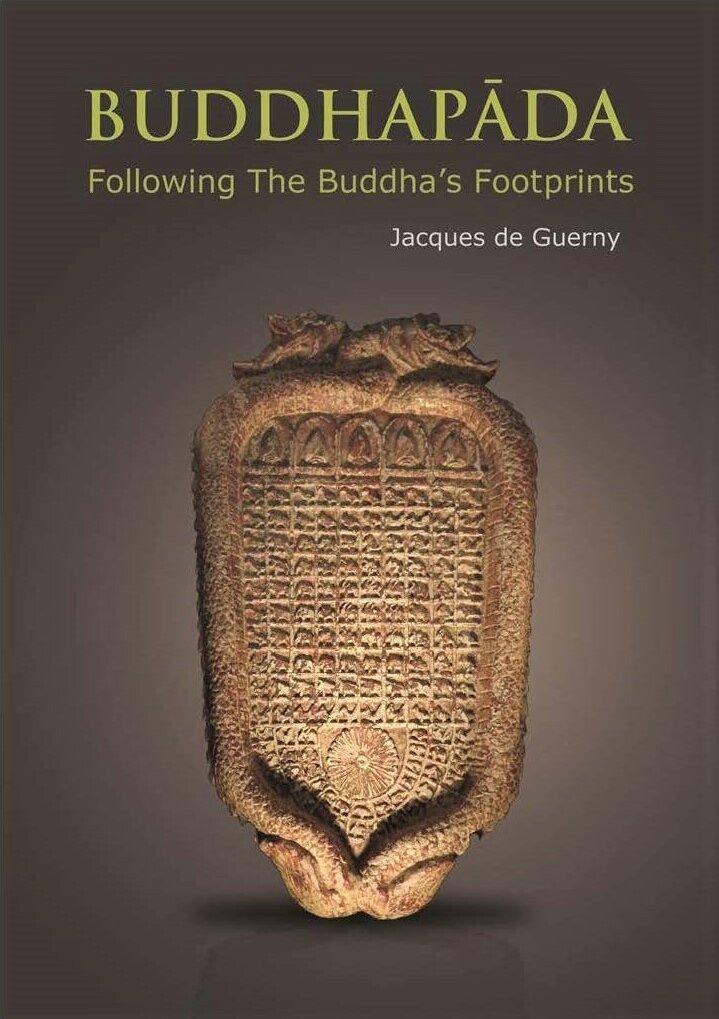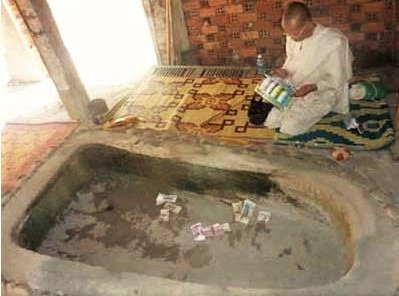Buddhapāda: In the Buddha's Footprints
by Jacques de Guerny
A quest for Buddha's footprint artworks from India and Sri Lanka to China to Japan, South Korea, Myanmar, Thailand, Laos and Cambodia

Type: on-demand books
Publisher: Orchid Press ebooks, Bangkok
Published: 2013
Author: Jacques de Guerny
Pages: 236
ISBN: 978-974-524-162-6
Language : English
From the author’s Introduction: “Buddhapāda, a word derived from ancient Sanskrit, refers to the foot or feet of the historical Buddha — or, strictly speaking,the imprint of his soles. These traces of the past, perhaps even invisible to the non-believer, may often be found as magnificent works of art, adorned with symbols both religious and cultural, perhaps resplendently engraved or inlaid with finely cut jewels, brilliantly painted or even gilded.
The purpose of Buddhapāda was not only to denote the Lord’s presence, or at least to provide a record of it, but also to act as means of tranmitting His message and His teachings. This was achieved through the employment of symbolic signs decorating the footprints, which themselves were sometimes massive in size — sufficient to impress the crowds with evidence of the Master’s greatness.”
Following the sacred footsteps, the study starts in Northern India (and in Gandhara to the West) and leads us on the path of Buddhism’s expansion to the East, concluding in Cambodia. For this country, the author discusses in detail the origin and techniques of Buddha’s footprints found in Angkor (2), Bayon (2), Bakheng (1), Phnom Kulen (2), and in other areas.
General remarks about Cambodia: “Specific prayers to Buddhapāda are always practiced: chanting them is a good way, particularly for illiterates, to remember and better understand their meaning. Another notable point is the existence of many ‘natural’ footprints along the ground or among mountain rocks or stone riverbeds, which are also objects of prayer by the locals. Comprising of sandstone or schist, many rocky places, eroded over the centuries, often gave birth to bizarre concave foot forms. People often believe that Buddha himself, or other ‘super humans’, types of local saints, made these imprints — for example, the famous well of Phnom Bei, full of water during the rainy season, or the revered print of Phnom Chankraham in a northern forest, both near Angkor.
“Concerning footprints made by humans, François Bizot, in 1971, under the auspices of the EFEO, was the first to undertake general study of Buddhapāda in Cambodia.”
email hidden; JavaScript is required
This book was initially self-published in French by the author (2012: Phnom Penh)
 The Buddhapada of Phnom Santuk, south of Tonle Sap Lake (author’s photo)
The Buddhapada of Phnom Santuk, south of Tonle Sap Lake (author’s photo)
Tags: sculpture, Theravada Buddhism, Khmer art
About the Author

Jacques de Guerny
A professor of Economics at Harvard University “in another life”, Dr. Jacques de Guerny is an independent researcher and a member of the French Société Asiatique.
He has studied the Buddhapada artworks or sites across Asia, including Cambodia, and authored L’odyssée des tambours de bronze de l’Asie du Sud-Est (Hémispheres, Paris, 2017). A website is dedicated to his research on Bronze Drums of Southeast Asia.
